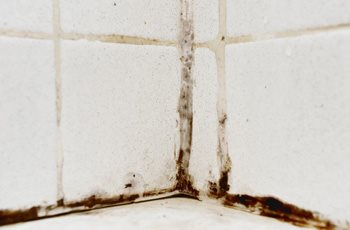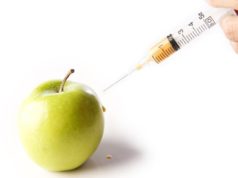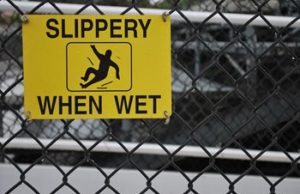
Toxic Mold Injuries: Facts You Need To Know
Mold is a common fungus that grows in damp, warm, and humid environments. While most molds are harmless, certain types of mold can produce dangerous toxins that can cause serious health problems. Toxic mold, often referred to as black mold, is a type of mold that can lead to multiple health issues, including respiratory problems, allergic reactions, and in severe cases, death. In this article, we’ll explore the facts you need to know about toxic mold injuries, including its symptoms, causes, and prevention.
What is toxic mold?
Toxic mold, also known as Stachybotrys chartarum, is a type of mold that produces mycotoxins, which are toxic compounds produced by certain fungi. It typically thrives in areas that are damp, humid, and poorly ventilated, such as basements, attics, bathrooms, and other areas where water damage has occurred.
Mycotoxins from toxic mold can cause a wide range of health problems, including respiratory problems, headaches, fatigue, skin rash, eye irritation, and gastrointestinal issues. In severe cases, toxic mold exposure has been linked to memory loss, anxiety, depression, and even death.
Symptoms of toxic mold exposure
The symptoms of toxic mold exposure can vary depending on the type of mold, the level of exposure, and the individual’s immune system. However, some of the most common symptoms associated with toxic mold exposure include:
– Respiratory problems: Coughing, wheezing, and shortness of breath
– Allergic reactions: Sneezing, runny nose, and itchy eyes
– Headaches and migraines
– Fatigue and weakness
– Skin rash or irritation
– Nausea, vomiting, and diarrhea
– Irritation of the throat, nose, and eyes
– Memory loss and confusion
– Anxiety and depression
If you’re experiencing any of these symptoms, especially after exposure to damp, moldy environments, you should consult with a medical professional immediately. Early detection and treatment of mold-related health problems can help prevent long-term complications.
What causes toxic mold?
Toxic mold grows in damp and humid environments, typically where water damage has occurred. Some of the most common causes of toxic mold include:
– Flooding: When a home or building experiences flooding, standing water can create a perfect environment for mold to grow.
– Water damage: Leaking roofs, plumbing leaks, and other types of water damage in the home can lead to mold growth.
– Humidity: Homes that are poorly ventilated or have high humidity levels can create a breeding ground for mold.
– Poor ventilation: Poor airflow in the home can trap moisture and create a perfect environment for mold growth.
– Building materials: Certain building materials, such as drywall and ceiling tiles, can absorb moisture and promote mold growth.
It’s essential to identify the source of the mold growth to prevent it from returning. If you’ve experienced water damage in your home or building, it’s crucial to have it professionally repaired to prevent future mold growth.
Preventing toxic mold
Prevention is key when it comes to toxic mold. Here are some steps you can take to prevent mold growth in your home or building:
– Keep indoor humidity levels low: Aim to keep indoor humidity levels below 60 percent. You can use a dehumidifier to help reduce moisture in the air.
– Ventilate the home: Open windows and doors to improve airflow and promote ventilation. You can also use exhaust fans in kitchens and bathrooms to help remove excess moisture.
– Fix leaks promptly: If you notice any leaks, such as from your roof or plumbing, have them fixed immediately to prevent water damage and mold growth.
– Inspect your home regularly: Regular inspections of your home or building can help identify any areas of water damage or signs of mold growth early.
– Clean and dry up spills or water damage promptly: If you experience any spills or water damage in your home, it’s essential to clean and dry them up immediately to prevent mold growth.
It’s also crucial to regularly clean and disinfect areas of the home that are prone to moisture, such as bathrooms, basements, and kitchens.
Testing for toxic mold
If you suspect that your home or building has toxic mold, it’s essential to have it professionally tested. Mold testing involves collecting samples of the air and surfaces in your home to determine the type and level of mold present.
There are several types of mold testing available, including:
– Air testing: This involves testing the air in your home for mold spores. Air testing can help determine if there is a mold problem in your home and how severe it is.
– Surface testing: This involves collecting samples from surfaces, such as walls and floors, to determine if they are contaminated with mold.
– Bulk testing: This involves collecting samples of materials, such as drywall or insulation, to determine if they are contaminated with mold.
Professional mold testing can help identify any mold problems in your home and determine the best course of action to remove it safely.
Removing toxic mold
If you have toxic mold in your home, it’s essential to have it professionally removed to prevent further exposure to mycotoxins. Mold removal involves several steps, including:
– Identifying and fixing the source of the moisture.
– Containing the mold to prevent further contamination.
– Cleaning and disinfecting affected areas.
– Drying the area to prevent future mold growth.
– Disposing of any contaminated materials safely.
Mold removal can be a complex process and should be done by a professional remediation company. DIY mold removal can do more harm than good, spreading mold spores and mycotoxins throughout the home.
Conclusion
Toxic mold injuries are a serious health concern that should not be taken lightly. If you suspect that your home or building has toxic mold, it’s essential to have it professionally tested and removed. Prevention is key when it comes to toxic mold, so taking steps to keep your home dry and well-ventilated can help prevent mold growth in the first place. With early detection and treatment, you can protect yourself and your family from the harmful effects of toxic mold.
– Allergic reactions: Sneezing, runny nose, and itchy eyes
– Headaches and migraines
– Fatigue and weakness
– Skin rash or irritation
– Nausea, vomiting, and diarrhea
– Irritation of the throat, nose, and eyes
– Memory loss and confusion
– Anxiety and depression
– Water damage: Leaking roofs, plumbing leaks, and other types of water damage in the home can lead to mold growth.
– Humidity: Homes that are poorly ventilated or have high humidity levels can create a breeding ground for mold.
– Poor ventilation: Poor airflow in the home can trap moisture and create a perfect environment for mold growth.
– Building materials: Certain building materials, such as drywall and ceiling tiles, can absorb moisture and promote mold growth.
– Ventilate the home: Open windows and doors to improve airflow and promote ventilation. You can also use exhaust fans in kitchens and bathrooms to help remove excess moisture.
– Fix leaks promptly: If you notice any leaks, such as from your roof or plumbing, have them fixed immediately to prevent water damage and mold growth.
– Inspect your home regularly: Regular inspections of your home or building can help identify any areas of water damage or signs of mold growth early.
– Clean and dry up spills or water damage promptly: If you experience any spills or water damage in your home, it’s essential to clean and dry them up immediately to prevent mold growth.
– Surface testing: This involves collecting samples from surfaces, such as walls and floors, to determine if they are contaminated with mold.
– Bulk testing: This involves collecting samples of materials, such as drywall or insulation, to determine if they are contaminated with mold.
– Containing the mold to prevent further contamination.
– Cleaning and disinfecting affected areas.
– Drying the area to prevent future mold growth.
– Disposing of any contaminated materials safely.
Toxic mold is a fungal organism that can grow indoors or outdoors. Oftentimes referred to as ‘black mold’, toxic mold is considered to be a very dangerous growth as a result of the adverse health effects that it stimulates in human beings. Akin to the biology of other forms of mold and fungus, toxic mold releases spores that travel through the air – these airborne spores are easily ingested by human beings.
Illness Caused by Toxic Mold
Upon exposure to toxic mold – through ingestion or direct contact – human beings can develop a multitude of maladies. Furthermore, the duration of exposure contributes to the severity of illness contracted from toxic mold; individuals experiencing prolonged exposure to toxic mold – both through inhalation or contact – are liable to experience symptoms with increased severity than those temporarily exposed to toxic mold. Amongst the most common illnesses resulting from exposure to toxic mold are respiratory infections.
Symptoms Resulting from Exposure to Toxic Mold
Amongst the most commonly-reported symptoms resulting from prolonged exposure to toxic mold include flu-like symptoms, headaches, difficulty breathing, nausea, sinus infections, and skin rashes. Toxic mold is considered to be a resilient fungus – a quality that enables it to exist in a wide variety of locations and environments –the detection process can be a complex task.
What Causes Toxic Mold?
The presence of toxic mold can be caused by a variety factors, yet the most common cause for toxic mold is moisture. Homes and buildings that are constructed by old – or aging – wood prone to the absorption of moisture are amongst the most common locations for toxic mold to reside. Toxic mold can also inhabit other hydrophilic material such as rugs and carpets. In many cases, basements and cellars are the most common, as well as the most habitable locations for toxic mold; this is due to the fact that toxic mold thrives in damp and dark environments. The dampness of a location creates moisture, while the lack of sunlight disallows for the evaporation of fluid.
Toxic Mold Recourse and Prevention
Subsequent to its discovery and analysis, toxic mold has become a notorious health threat since the 1970’s; as a result, housing and building inspectors alike have been instructed to examine a structure for both the presence of toxic mold, as well as the habitability of a given structure. In addition, town, city, and state ordinances require health inspectors to investigate for the presence of toxic mold upon any report of symptoms suffered by inhabitants of the home or building in question.
























